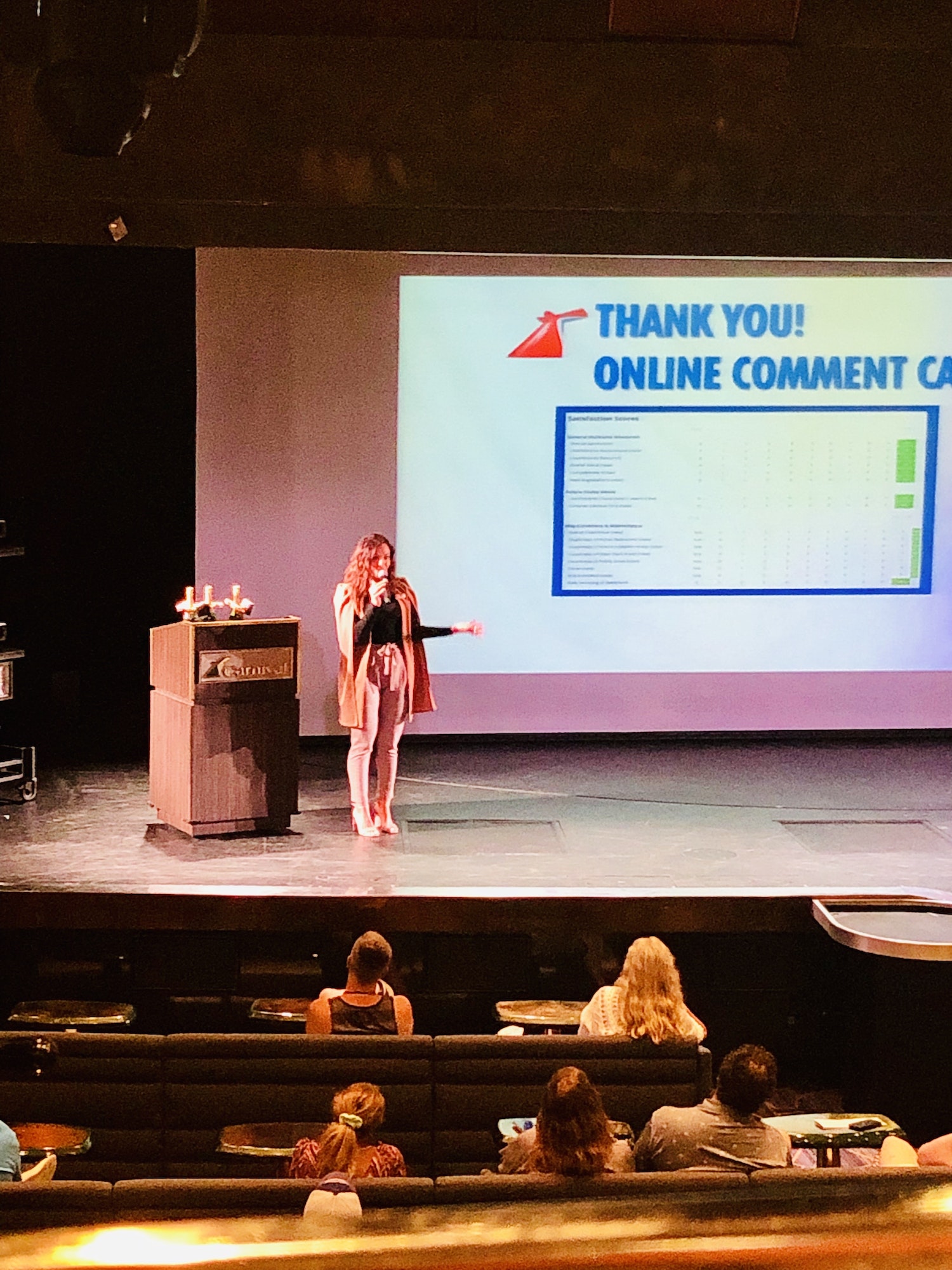A significant part of thought leadership is effectively communicating your insights to your audience. It’s about more than just having innovative ideas; it’s also about sharing these ideas in a compelling, engaging manner. As a thought leader, you’ll often find yourself in the spotlight, delivering public speeches, hosting webinars, leading workshops, giving keynotes, or telling stories. In this blog post, we’ll explore the art of speaking and presenting as a thought leader.

Public Speaking – Building Confidence and Clarity
Public speaking is an essential skill for any thought leader, and there are several strategies you can employ to improve your abilities. The first step is consistent practice, as there are no shortcuts to becoming an excellent public speaker.
Record yourself during practice sessions, review the recordings, and make necessary improvements. If you experience nervousness when speaking in public, consider joining a public speaking group or hiring a coach who can provide guidance and support.
Additionally, techniques such as deep breathing, visualization, and positive self-talk can help manage anxiety and increase your confidence on stage. When structuring your speech, aim for a clear and logical flow. Start with a strong introduction that captures the audience’s attention, then move on to the body of your speech, where you present your main points and conclude with a memorable and impactful ending.
Throughout your speech, prioritize clarity and conciseness. Clearly express your ideas, avoiding jargon and using short sentences to maintain audience engagement. Ensure that each point you make builds upon the previous one, creating a cohesive and coherent narrative.
With consistent practice, overcoming nerves, effective speech structure, and clear communication, you can enhance your public speaking skills and become a more impactful thought leader.
Webinars – Interacting and Engaging Digitally
Webinars offer a digital platform for real-time engagement with your audience, and to ensure a successful webinar, proper preparation is critical. Thoroughly research your content and ensure its relevance to your audience. Additionally, familiarize yourself with the webinar platform, providing a smooth and seamless experience for you and your participants.
During the webinar, actively encourage audience participation to enhance engagement. This can be achieved through interactive elements such as polls, Q&A sessions, or engaging exercises that allow your audience to contribute and learn actively. Incorporating visual aids is another effective way to make your presentation more exciting and impactful. Utilize slides, videos, or infographics to reinforce your message and capture your audience’s attention visually.
Finally, following up after the webinar is crucial to solidify the connection with your audience. Send a well-crafted follow-up email that includes a summary of the webinar, additional resources for further learning, or a recording of the webinar itself, allowing those who missed it to catch up or review the content. By focusing on preparation, active participation, visual aids, and thoughtful follow-up, you can create engaging and successful webinars that facilitate meaningful interaction with your audience.
Workshops – Facilitating Learning
Leading workshops demands a distinct skill set, primarily centered around effective facilitation techniques. To ensure a successful seminar, it’s crucial to have a deep understanding of your audience. Being aware of their needs, prior knowledge, and learning styles allows you to tailor the workshop content and delivery to be most effective and relevant. Interactive activities are essential in workshops as they promote active participation and enhance the learning experience.
Plan and incorporate activities that engage the participants, encourage collaboration, and facilitate hands-on learning. Creating a safe and supportive environment is vital for the success of the workshop. Participants should feel comfortable asking questions, sharing their thoughts, and making mistakes as part of the learning process. By fostering an atmosphere of trust and respect, you create an optimal environment for growth and knowledge acquisition.
Lastly, providing constructive feedback throughout the workshop enables participants to apply what they’ve learned and improve. Offering guidance, encouragement, and specific suggestions helps reinforce their understanding and promotes skill development. By incorporating these strategies of understanding your audience, planning interactive activities, fostering a safe environment, and providing feedback, you can lead engaging and enriching workshops that facilitate meaningful learning experiences.

Keynotes – Inspiring Your Audience
Delivering impactful keynotes provides a remarkable opportunity to inspire and captivate your audience. To make your keynote effective, it’s essential to have a clear, concise message at its core. This message should be relevant, valuable, and resonate with your audience’s needs and aspirations.
Incorporating storytelling into your keynote can significantly enhance its impact. Share personal anecdotes, case studies, or success stories that illustrate your points and create an emotional connection with your listeners.
Visual aids can further elevate your keynote, but it’s essential to use them judiciously and ensure they complement and reinforce your message rather than distract from it. Keep visuals simple, visually appealing, and aligned with your content.
To make your keynote memorable and actionable, conclude with a solid call to action. Clearly articulate what you want your audience to do or achieve after experiencing your keynote, whether it’s implementing a new approach, embracing a mindset shift, or taking concrete steps toward their goals.
By crafting a keynote with a clear message, incorporating engaging storytelling, leveraging visual aids effectively, and ending with a compelling call to action, you can leave a lasting impact on your audience and inspire them to take meaningful action.
Storytelling – Making Your Message Memorable
Storytelling is a potent tool for enhancing the impact of your message, making it more memorable and resonant. To effectively employ storytelling, infusing your narratives with a personal touch is crucial. Sharing personal stories that highlight your challenges, failures, or lessons learned can foster a deep sense of relatability, creating a stronger connection with your audience.
Additionally, incorporating emotions into your stories can significantly amplify their impact. Whether it’s evoking joy, surprise, fear, or anticipation, emotions can captivate and engage your audience, making your stories more compelling and memorable. A well-structured story is key to its effectiveness. Ensure that your narrative follows a clear trajectory, with a beginning that sets the stage, a middle that presents the challenge or conflict, and an end that brings resolution or closure.
Finally, it’s vital to relate your story to your overarching message. Ensure there is a clear and coherent connection between your story and the key points you want to convey, reinforcing and supporting your statement. By incorporating personal experiences, leveraging emotions, employing a well-structured narrative, and reinforcing your message, storytelling becomes a powerful tool for leaving a lasting impact on your audience, ensuring they remember your message and connect with it on a deeper level.
Mastering speaking and presenting as a thought leader takes practice, preparation, and a deep understanding of your audience. Whether you’re delivering a public speech, hosting a webinar, leading a workshop, or giving a keynote, the goal remains the same: to share your insights and ideas in a way that resonates with your audience.
Public speaking requires confidence and clarity. Webinars offer opportunities for real-time digital interaction. Workshops call for facilitation skills and a safe learning environment. Keynotes are a chance to inspire your audience with one clear, compelling message. And storytelling makes your message more relatable and memorable.
As a thought leader, your voice is a powerful tool. It allows you to connect with your audience, share insights, and influence change. But above all, it enables you to lead. As you master the art of speaking and presenting, you’ll not only share your ideas but also inspire others to see things from a new perspective, think differently, and take action. In doing so, you’ll genuinely embody thought leadership. Remember, as a thought leader, your goal isn’t just to be heard; it’s to make a difference.





